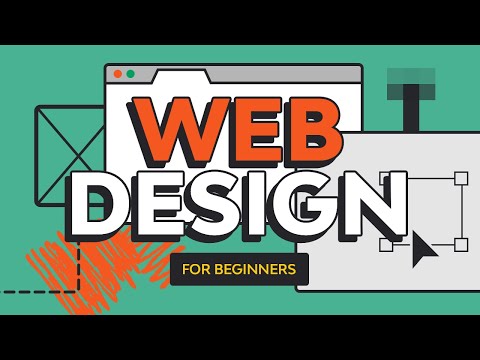An In-Depth Guide to Comprehending the Crucial Element That Add to Effective Web Design in Today's Digital Landscape
In today's quickly progressing digital landscape, the details of successful website design demand cautious factor to consider of numerous foundational components. From the crucial nature of responsive design to the subtleties of reliable material method, each part plays a critical function in improving individual experience and interaction. Recognizing exactly how these components adjoin is essential for creating a web site that not just draws in visitors however additionally promotes long lasting links. As we explore these vital elements, one may ask yourself exactly how they can be successfully carried out to achieve optimum results.
Significance of Responsive Style
In today's electronic landscape, the relevance of receptive layout can not be overstated. As customers significantly accessibility websites through a range of gadgets, including mobile phones, tablet computers, and desktop computers, a site's ability to adapt its format and capability to different screen dimensions is important. Responsive layout boosts customer experience by making sure that content is conveniently legible and navigable, regardless of the gadget being made use of.

Key Concepts of Individual Experience
Receptive layout prepares for a positive user experience, which is affected by numerous vital principles that lead efficient website design. Among the leading principles is simpleness, where a tidy and minimalist interface enables users to navigate the website easily. This is matched by instinctive layout, which makes certain that users identify functional aspects without complication.
Another important aspect is ease of access, making certain that all customers, no matter their capabilities, can interact with the web site. This includes utilizing readable fonts, contrasting shades, and different text for photos. Additionally, the concept of uniformity across various web pages helps customers build experience with the website, improving their general experience.

Navigational Structure and Usability
An efficient navigational framework is necessary for boosting usability on a web site, as it directly affects exactly how conveniently customers can discover details and achieve their goals. A clear hierarchy allows customers to without effort comprehend the layout of a site, helping with smoother navigating and lowering irritation.
Reliable navigating should include a rational collection of related web content, which aids customers locate information rapidly. Applying primary, second, and tertiary navigating food selections can develop a smooth experience, assisting individuals through different levels of web content without frustrating them. Consistency look what i found in navigating layout throughout all pages is essential; individuals should constantly understand where they are and exactly how to go back to previous sections.
Additionally, using descriptive tags for navigating links is essential. Individuals need to be able to predict the content of a web page based only on the link message. Browse performance also improves functionality, permitting individuals to bypass the navigating framework completely if needed.
Lastly, mobile responsiveness must be thought about, as a considerable section of internet website traffic comes from mobile phones. A navigational structure that adapts to various screen dimensions will make certain usability stays high, no matter the system.
Aesthetic Components and Branding
Reliable visual aspects and branding are important components of website design, as they not only convey the identity of Get More Info a brand but also enhance customer involvement. A cohesive visual identity, defined by regular usage of colors, typography, and images, establishes acknowledgment and fosters trust amongst individuals. Color psychology plays a significant role; various colors stimulate particular feelings and can affect individual actions. For instance, blue often shares count on, while red can produce a sense of necessity.
Picking proper font styles that line up with the brand name's character can boost the message and boost customer experience. They must be relevant, compelling, and optimized for quick loading to maintain individual focus.

Material Approach and Involvement
Creating a durable web content method is necessary for driving individual interaction and cultivating meaningful communications on a web site. A well-defined web content method lines up with business goals while attending to the demands and preferences of the target audience. It incorporates numerous components, consisting of web content production, curation, distribution, and analysis, making sure that the website stays relevant and valuable.
Effective content needs to be customized to resonate with individuals, utilizing a mix of styles such as articles, videos, infographics, and interactive functions. This range not just catches attention but likewise satisfies varied understanding styles and preferences. Additionally, this link using search engine optimization best practices improves visibility, attracting natural traffic to the website.
Engagement is more enhanced through the combination of user-generated material, social sharing options, and phones call to action that urge interaction. By promoting a sense of neighborhood and dialogue, internet sites can grow loyalty and encourage repeat brows through.
Lastly, continual evaluation of user involvement metrics allows for ongoing optimization of content method, making sure that the website adapts to evolving user needs and choices (web design). In the competitive electronic landscape, a calculated approach to material is paramount for sustained success
Final Thought
In conclusion, successful web style in today's electronic landscape relies upon a multifaceted method that integrates responsive style, individual experience principles, instinctive navigating, natural visual branding, and a strategic content framework. Each of these aspects plays a vital role in boosting user engagement and fulfillment. By focusing on these essential components, websites can properly satisfy business objectives while fostering meaningful links with their audience, eventually contributing to continual success in an increasingly affordable on the internet setting.
Comments on “The Duty of Search Engine Optimization in Optimizing Your Web Design for Higher Rankings”